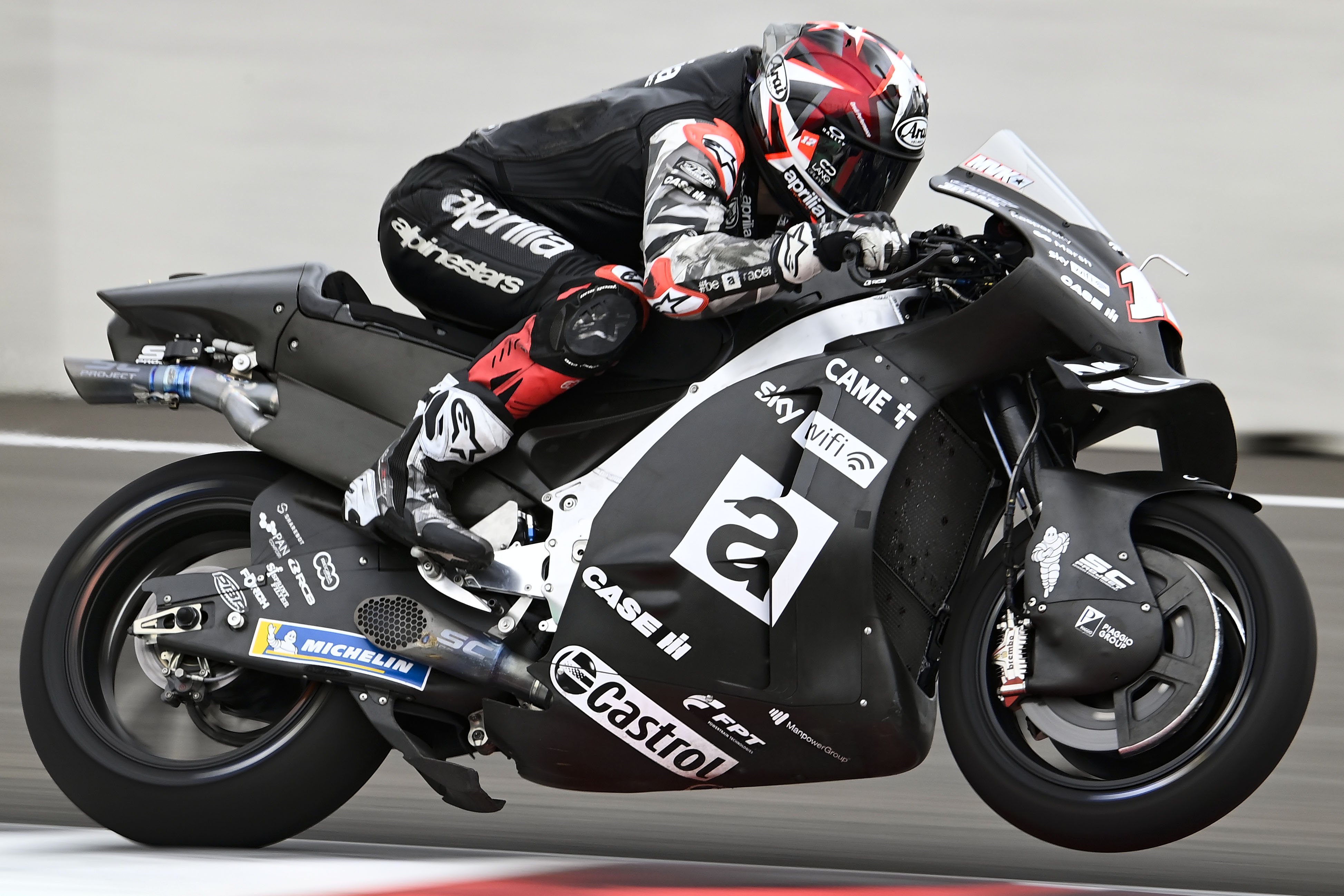The future of MotoGP’s ride height adjustment devices could be even shorter than initially anticipated amid rising calls from riders to ban the technology on safety grounds, with a meeting of the rulemaking body the Grand Prix Commission called at this weekend’s season-opening Qatar Grand Prix for the series’ six manufacturers to discuss what happens next.
It’s believed by The Race’s sources in the paddock that Ducati will present a proposal to postpone any threatened ban on at least the front ride height devices – but will be countered by the other five manufacturers who want the systems removed from the championship as soon as possible.
The devices have developed out of the rear ride height devices first trialled by Ducati in 2019, with Suzuki becoming the final manufacturer to join the club mid-way through the 2021 season.
Using a catch on the rear linkage, they lock the bike in a more squatting position, effectively making it longer and able to accelerate better.
However, Ducati again upped the ante in 2021 by migrating the tech to the front of the bike as well, using a similar mechanism to lock the front forks in place exiting a corner. But, with electronic suspension adjustment banned in MotoGP, it means the entire system has to be controlled by less precise hydraulics and cables – a problem that can create safety implications when the system fails to disengage.
As a result, opposition has been growing for some time now, with a number of senior figures in the championship railing against the devices in the pre-race press conference at Lusail when questioned about the proposed ban by The Race.
“For me, it’s something that in the future they must remove,” insisted Repsol Honda rider Marc Marquez. “I already said last year when I arrived back after my injury, and I think all the riders need to vote together. In the end, manufacturers always go more, more, more – but now with the holeshots and more stroke on the rear, there is more speed, more stress on the front.

“For the show we don’t gain anything, and OK, these are prototypes but for the street bikes, it’s not necessary. I agreed with the aerodynamics because it’s always nice to have a new thing, but not all the holeshot systems.
“We’re always trying to increase runoff areas, and now we’re arriving faster to the brake points, we’re braking later because with the holeshots we can brake later. For the future, it makes no sense.”
“I think that it’s starting to be too much,” added 2020 world champion Joan Mir. “Every time, we arrive faster onto the straights – we’ll reach 370kph soon but the [track] layouts are the same. For sure it’s more performance, but it means it’s more difficult to make a difference on the acceleration side. If you use it, everything is much easier, but for the safety, it’s not the best thing.”
However, it’s believed that any ban will only apply to the front devices, with riders keen to keep the rear versions, ironically because they believe that they have a safety role to play.
These were initially introduced only for the start of the race to control wheelies off the line, but the rear devices can now be used accelerating out of slow corners – something that Maverick Vinales says is better for safety, not worse.
“I think on the acceleration,” explained the Aprilia rider, “it’s much more safe with the holeshot because I remember some times like the last one in Austria – you accelerate from zero and the wall is very close.

“With the device, the front is always having much more contact on the ground. Now it’s going too far with too many things, but I think at least the rear device for the start and for the acceleration it’s much more safe.”
Ironically, one solution to the problem would potentially be to lift MotoGP’s ban on electronically-altered suspension, something initially introduced as a cost-saving measure.
It’s now prevalent on road bikes and it allows the bike’s sensors to alter the geometry in real-time, and could potentially be one way to keep the theory behind the ride height devices while also making the bikes safer.






